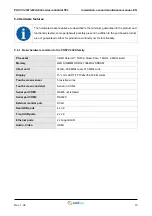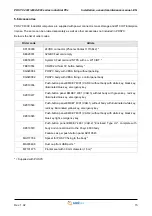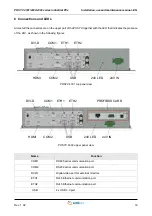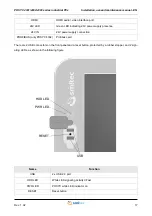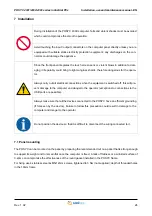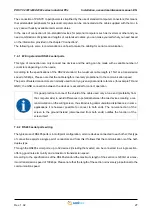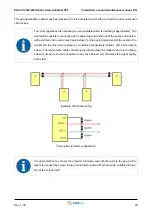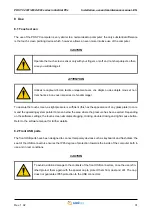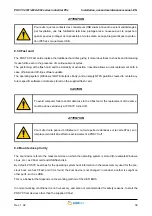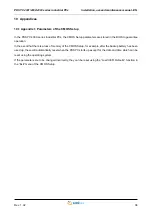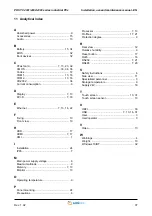
POSYC 4301/4302/4303 series industrial PCs
Installation, use and maintenance manual - EN
Rev. 1.02
27
The connection of POSYC to peripherals is simplified by the use of standard computer connectors; this means
that all standard peripherals for personal computers can be connected via the cable supplied with them or in
any case with easily available commercial cables.
In the case of connection of non-standard devices for personal computers such as inverters or other and you
need combinations of signals and lengths of customized cables, you can make yourself what you need based
on the information provided in the chapter “Connections”.
The following are some recommendations on how to make the cabling for serial communication.
7.4.1 Wiring standard RS232 serial ports
This type of connection can only connect two devices and the wiring can be made with a variable number of
conductors depending on the needs.
According to the specifications of the RS232 standard, the maximum cable length is 15mt at a transmission
speed of 20kbps. Please note that the cable length is inversely proportional to the communication speed.
The pairs of twisted conductors are normally used to carry a given signal and its reference (for example TD and
GND); the GND connection between the devices is essential for correct operation.
7.4.2 RS485 serial ports wiring
The typical use of RS485 ports is in multipoint configuration, or more devices connected to each other; this type
of connection exploits a single pair of conductors and from this it follows that the communication is of the half-
duplex type.
Through the RS485 serial ports, up to 32 devices (including the master) can be connected in a single section,
offering good noise immunity and a maximum transmission speed.
According to the specifications of the RS485 standard the maximum length of the section is 1200mt at a max-
imum transmission speed of 100kbps. Please note that the length of the section is inversely proportional to the
communication speed.
It is good practice to connect the shield of the cable used only at one end (preferably from
the computer side) to avoid differences in potential between the two devices creating a cur-
rent circulation on the wiring screen, thus introducing communication disturbances; in some
applications it is however possible to connect to both ends. The non-connection of the
screen to the ground instead (disconnected from both ends) nullifies the function of the
screen itself.

